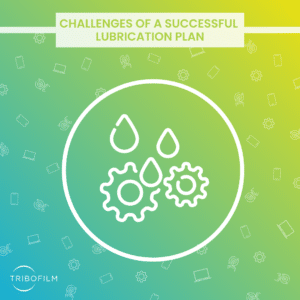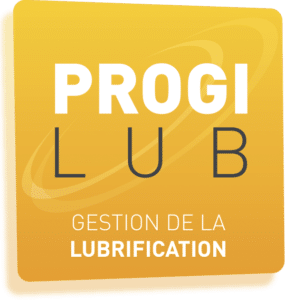
In industrial maintenance services, It’s not a secret that lubrication is a major issue, impacting business performance and production asset life span.
In fact, many times, broken equipment is due to a lack of proper lubrication, and in this article we’ll cover the main points to think about when talking about lubrication management:
- Common lubrication plan challenges,
- Setting up an effective lubrication plan,
- The benefits of having specific lubrication management software,
- Financial impacts.
Common Lubrication Plan Challenges
Implementing a great lubrication plan ensures the smooth running and durability of machines and equipment. The main challenges of its implementation are to:
- Reduce wear and friction to extend equipment life and avoid premature and costly breakdowns.
- Improve energy efficiency by helping to reduce energy losses due to friction and therefore improving machine efficiency and reducing energy consumption.
- Prevent overheating problems through proper lubrication to avoid damage to parts and production shutdowns.
- Comply with industry specific standards and regulations.
- Ensure safety by maintaining machines in good working order, limiting the risk of accidents to technicians.
Setting Up of a Lubrication Plan
To set up an effective lubrication plan and ensure its follow up, we need to take into account several necessary steps:
- Identify all equipment and lubrication points by compliling a complet list of machinery requiring lubrication (Bearings, gears ect..)
- Select the right lubricants for each operation, taking into account different factors such as viscosity, temperature, applied loads, environmental requirments, as well as oil supplier advice.
- Etablish lubrication intervals for each lubrication point sulted to the manufacturer’s recommendations.
- Ensure lubricant stock management to avoid being out of stock or keeping in stock lubricants that are past their expiry date.
- Analyse equipment performance after implementation of the lubrication plan to assess its effectiveness and make continuous improvements.
Implementing a successful lubrication plan is an ongoing process. Once the plan is in place, it is important to take into account feedback, technological developments, new standards… so as to continually improve it and optimize equipment performance and productivity.
The Benefits of Lubrication Management Software
The right software makes it easy to set up and manage a lubrication plan.
By centralizing information, a lubrication management software program brings together all the relevant data related to equipment, lubrication points, lubricant used and lubrication intervals. The software simplifies overall management of the plan by:
- Saving time and reducing the risk of errors (no more forgotten application points) due to a set schedule, maintenance reminders and alerts.
- Being able to monitor the long term history of operations, consumption and analysis of oil…all relevant information needed to make the right decision at the right time.
- Managing stocks accurately and efficiently, especially when SEVESO control of risks and regulations are in place for hazardous products.
- Meeting compliance and regulation industry standards.
- Integrating with a CMMS software, allowing a full overview of the maintenance management plan and therefore optimizing processes and production.
- Harmonizing stock information and avoiding having too many lubrication references and therefore confusion about which product to use when.
A Lubrication Management Software can be an essential asset for simplified yet accurate lubrication management.
Reduce Maintenance Costs Due To An Effective Lubrication Plan And Adapted Software
By avoiding premature wear, breakdowns and costly repairs, a lubrication plan and specific software can allow a substantial reduction in maintenance costs, especially when it comes to corrective maitnenance.
Firstly, the costs are reduced for repairs, equipment replacement and production shutdowns. Furthermore implementing predictive maintenance measures can help to detect potential problems before major failures.
There are also cost savings regarding consumption levels of grease which becomes possible to analyse through different data sets. This allows machines to be greased when needed, using the right amount of lubricant, and therefore eliminates additional purchase costs and unnecessary waste.
Scheduling and organizing lubrication tasks also optimizes labor efficiency and minimizes associated costs.
By using the appropriate lubricants and having the best lubrication conditions, you can also reduce energy consumption of equipment. This can be seen on subsequent energy bills and contribute to a more environmentally friendly approach.

